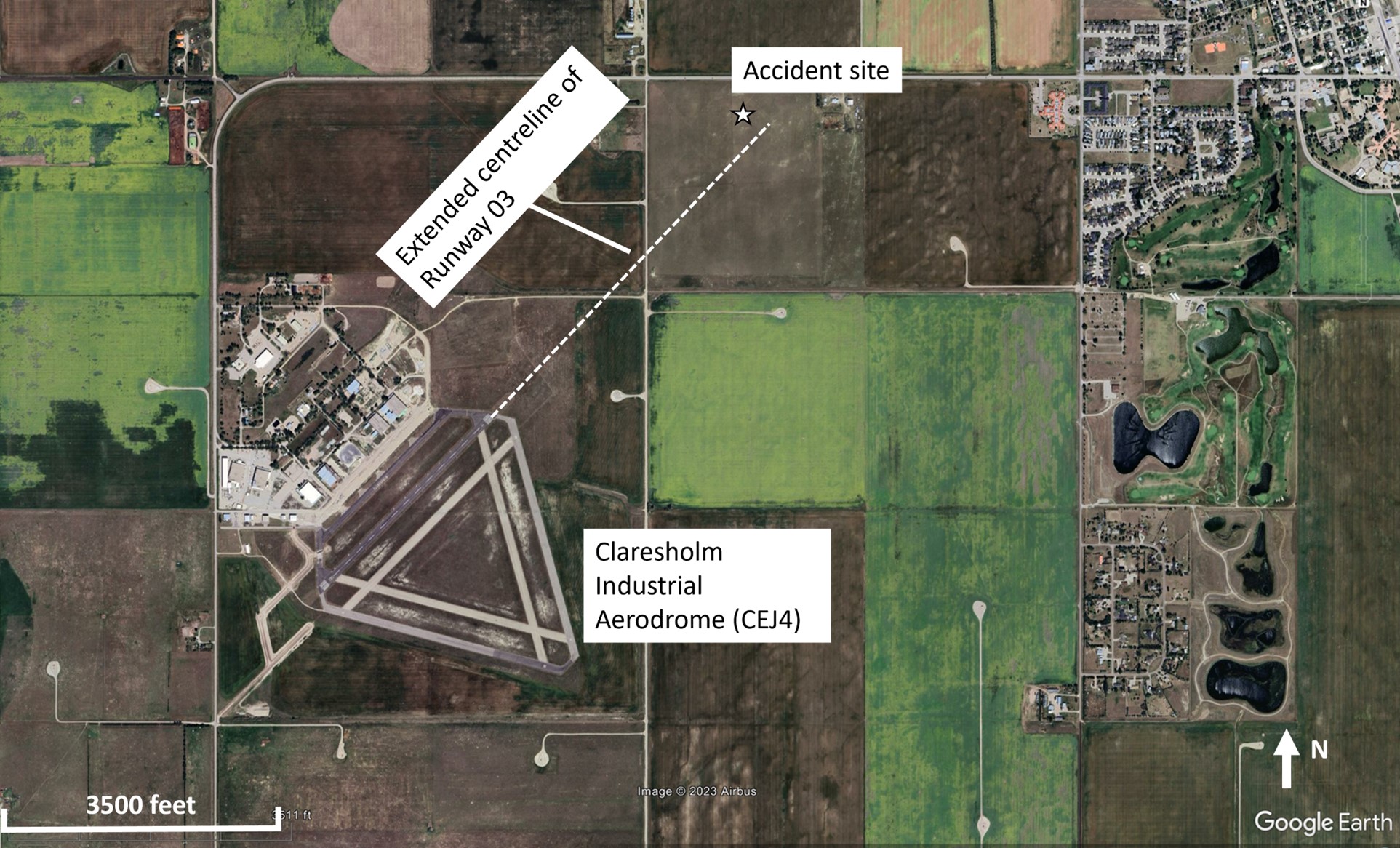Cessna 152 loss of control and collision with terrain

by
Posted
It’s not often that I write about airplane accidents, but this report makes useful (and sad) reading for PPL students across the country.
In August of last year, in Alberta, a Cessna 152 crashed, killing the sole-occupant pilot. The aircraft was owned and operated by an aerial photography company, and had made a forced landing on a road during which a wing was damaged. The aircraft was recovered and repaired, and this was its first flight after being fixed. Not unreasonably, the focus of post-accident speculation might have been that the repairs hadn’t been done correctly in some way, particularly given that the airplane went into a spin and crashed shortly after takeoff.
Here’s a link to the report.
However according to the report a thorough examination of the wreckage showed no evidence of prior defects or any other fault that would compromise the pilot’s ability to keep the plane under control. All the evidence showed the repairs were done right. The TSB did determine however that the ground speed of the aircraft after departure was very low, and taking into account the likely winds, it appears the climbout was flown at an indicated airspeed of 46 knots, whereas the airspeed for best rate of climb (that a pilot would usually maintain for a period after takeoff) was 65 knots. The maximum gross weight stalling speed in level flight for this aircraft is noted in the Pilot Handbook at 48 knots; given that the weight at the time of the accident was only slightly below the maximum permitted it’s hard not to draw the conclusion that the pilot simply flew the aircraft with too high a pitch attitude and therefore too slowly (although, the TSB report does avoid making this finding directly.)
The ground elevation of the airport was 3325 feet and it was a hot afternoon in August. The report notes that the density altitude at the time of the accident was a relatively high 5347 feet above sea level. Of some significance is that the engine mixture control was found to be in the fully-rich position. It seems probable that it was set fully rich prior to takeoff. Given the high density altitude, more engine power would have been available for the departure and therefore a better rate of climb would have been achieved if the mixture had been leaned for maximum RPM on the runway before the pilot released the brakes. To do so is standard procedure for a high-altitude takeoff and is instructed in the Pilot Handbook.
Aside from a different mixture setting, pilots used to flying out of higher altitude airports will remember the need to accept a longer takeoff roll, set a lower pitch attitude and expect a lower initial rate of climb there than they would at or close to sea level.
We don’t know where the pilot in this accident had trained, but the aircraft and the company that operated it were both based in London, Ontario, where the elevation is much lower at 912 feet MSL. It’s possible that the pilot and airplane were only flying out of Claresholm, Alberta because that was where the aircraft had been repaired after it’s previous damage. We typically maintain the best-rate-of-climb airspeed after takeoff by reference to the position of the horizon in the window. Flying from only low-lying airports it can be easy to forget that the correct position for the horizon to maintain that speed can vary considerably from flight to flight according to weather, location, aircraft weight and so on.
The pilot was a fairly-newly qualified CPL so one can imagine that before making this test flight her major concern was, rightly, that the significant repairs had been conducted properly – that the aircraft controls were rigged right, fuel lines connected, and so forth. To her credit, during her pre-flight inspection she did find a fuel leak, which was fixed before her departure. We can’t conclude that she didn’t also brief herself with the changes to her technique required by a higher-altitude departure than she might have been used to (mixture leaned, lower pitch attitude, and to accept as normal a slower climb than ‘usual’), but we can note the temptation to forget those things. We especially should note that we might also forget them in the same kind of situation.
Something my students will remember me telling them (typically while craning their necks to look out of the window for another airplane they heard on the radio) is that it’s not a collision with the one you know about that’s going to get you – it’s the one that you don’t know about. In this context a lesson to learn and remember is that having identified one source of danger to a flight (such as a newly-repaired airplane) please don’t end your analysis there. There can be other out-of-the-ordinary things to consider too, and failing to do is a mistake that can lead to real problems – and even fatal results.